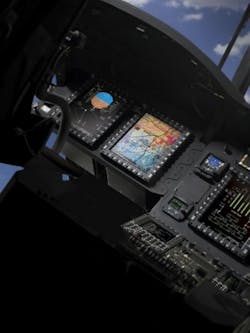Posted by John McHaleCEDAR RAPIDS, Iowa, 21 Jan. 2011. U.S. Army officials, in an effort to keep helicopter avionics costs down and at the same time integrate commercial hardware and software technology, worked with Rockwell Collins engineers in Cedar Rapids, Iowa, to develop the Common Avionics Architecture System (CAAS), which is implemented through open standards on hardware and software. The program is still in use today across the whole Army helicopter fleet.About 15 years ago government systems at Rockwell Collins had an open system architecture initiative on the commercial side to develop avionics more rapidly regarding capability enhancements, says Dan Toy, principal marketing manager in mobility and rotary wing business area at Rockwell Collins. “We made that decision together with the commercial side of the business.”For the government side we initially branded it for an upgrade to the Air Force KC-135 GATM program, Toy continues. “We then brought it to the U.S. Army special operations MH-47 Chinook and MH-60L Black Hawk helicopters and that became CAAS.“We built CAAS around a large number of open standards such as a Compact PCI in hardware systems, Toy says. “The whole reason we went to open standards was to leverage larger technology being used across the world” and help manage obsolescence, he adds.
“We look at the entire market, then roadmap technology such as microprocessors, watching how they evolve, Toy says. “We don't look at just at single vendors such as Intel or Freescale. We try to find the best in class, watch them mature, and decide then best time to do a technology insertion.”
Rockwell Collins is currently managing avionics upgrades on the CH-47F and MH-47G Chinook Special Operations helicopters through CAAS, with new digital flight controls, displays, and other avionics, says Boe Svatek, programs manager for advanced rotorcraft programs. The CH-47F program with CAAS will keep the aircraft flying till 2030.
The company’s multi-function display (MFD) 268 is used across all CAAS systems today and implemented on the Chinook 47, Svatek says.
The Software Configurable Digital Air Data Computer on the MH47 is from Curtiss-Wright Controls in Charlotte, N.C., says Chris Thompson, vice president of sales for Curtiss Wright Controls Integrated Sensing. It is designed so that the operator can load in software applicable for a particular helicopter, so it can work with several helicopters, he adds.
“We are adding a lot of capability to the Chinook,” Svatek says. It is being upgraded through a multi-year procurement strategy, which locks in configuration early on so the taxpayer can benefit from consistency, he adds.
“The beauty of the Chinook is that it got a new life, almost like it was a brand new platform” because of CAAS, Svatek says. “It’s a model program.”
“Traditionally the military industrial complex developed all the standards,” but CAAS enables the use of commercially available processors, Compact PCI, Ethernet, and standard software systems as POSIX, Toy says. These enable greater efficiency and more affordable products, he adds.
“We predominantly use LynxOS 178 real-time-operating system (RTOS) as it was part of our initial designs,” Svatek says. “Our people went through the entire RTOS and refined it to be certified to DO-178B.”
That said, “We could host VxWorks from Wind River Systems in Alameda, Calif., or any similar system,” he adds.
Army officials did develop the capability to create their own software and integrate it into the CAAS system, but in the long run found that leveraging commercial technology and standards across several helicopters is very effective, Toy says.

